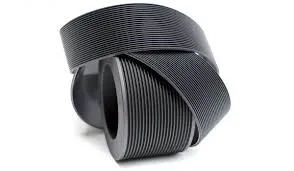- Arabic
- French
- Russian
- Spanish
- Portuguese
- Turkish
- Armenian
- English
- Albanian
- Amharic
- Azerbaijani
- Basque
- Belarusian
- Bengali
- Bosnian
- Bulgarian
- Catalan
- Cebuano
- Corsican
- Croatian
- Czech
- Danish
- Dutch
- Afrikaans
- Esperanto
- Estonian
- Finnish
- Frisian
- Galician
- Georgian
- German
- Greek
- Gujarati
- Haitian Creole
- hausa
- hawaiian
- Hebrew
- Hindi
- Miao
- Hungarian
- Icelandic
- igbo
- Indonesian
- irish
- Italian
- Japanese
- Javanese
- Kannada
- kazakh
- Khmer
- Rwandese
- Korean
- Kurdish
- Kyrgyz
- Lao
- Latin
- Latvian
- Lithuanian
- Luxembourgish
- Macedonian
- Malgashi
- Malay
- Malayalam
- Maltese
- Maori
- Marathi
- Mongolian
- Myanmar
- Nepali
- Norwegian
- Norwegian
- Occitan
- Pashto
- Persian
- Polish
- Punjabi
- Romanian
- Samoan
- Scottish Gaelic
- Serbian
- Sesotho
- Shona
- Sindhi
- Sinhala
- Slovak
- Slovenian
- Somali
- Sundanese
- Swahili
- Swedish
- Tagalog
- Tajik
- Tamil
- Tatar
- Telugu
- Thai
- Turkmen
- Ukrainian
- Urdu
- Uighur
- Uzbek
- Vietnamese
- Welsh
- Bantu
- Yiddish
- Yoruba
- Zulu
ਦਸੰ. . 04, 2024 10:49 Back to list
Understanding Mechanical Drive Systems and Belt Technology in Engineering Applications
Mechanical Drives and Belting An Overview
Mechanical drives and belting systems are crucial components in various industries, facilitating the efficient transfer of power and motion in machines. Understanding these systems is vital for engineers and technicians as they form the backbone of mechanical operations in manufacturing, automotive, and numerous other fields.
The Basics of Mechanical Drives
Mechanical drives are systems designed to transmit power from one part of a machine to another, typically from a motor to an operational component. These systems can be classified into several types, including gear drives, chain drives, and belt drives. Each of these systems has its unique characteristics and is chosen based on the specific requirements of the application.
Gear Drives
Gear drives utilize a set of gears to transfer motion and torque between shafts. They are known for their ability to provide precise motion control and high efficiency. Gears can change the direction of movement, increase or decrease speed, and alter torque according to the design of the gear ratios. However, they can be complex and may require precise alignment and maintenance.
Chain Drives
Chain drives are another popular method of mechanical power transmission. They typically consist of a series of links connected to form a loop, which runs on sprockets. Chain drives are known for their strength and durability, making them suitable for heavy-duty applications. They are often found in bicycles, motorcycles, and conveyor systems. One of the key advantages of chain drives is their ability to transmit power over long distances while maintaining a reliable grip.
Belt Drives
Belt drives, the focus of this article, are widely used in various applications due to their versatility and ease of use. A belt drive consists of two or more pulleys connected by a belt, which can be made of rubber, plastic, or a combination of materials. The belt transfers power from one pulley to another, enabling rotary motion to be transmitted over a distance.
Types of Belts
There are several types of belts used in mechanical drives, each suited to different applications
. Some common types includemechanical drives and belting

1. Flat Belts These are simple, flexible belts used in a wide range of applications. They offer a large contact surface, which allows for smooth power transfer but may experience slippage if not correctly tensioned.
2. V-Belts Shaped like a “V,” these belts are designed to fit into a matching groove on pulleys. This design enhances their grip on the pulleys, reducing slippage and allowing for the transmission of higher loads compared to flat belts.
3. Synchronous Belts Also known as timing belts, these belts have teeth that fit into corresponding grooves on the pulleys. This design ensures synchronized motion between the pulleys, making them ideal for applications requiring precise timing and positioning.
4. Composite Belts These are belts made of multiple materials, designed to optimize strength, flexibility, and wear resistance. Composite belts can withstand harsh conditions and are often used in industrial applications.
Advantages of Belt Drives
Belt drives offer numerous advantages, making them a popular choice in many mechanical applications
- Reduced Vibration and Noise Compared to gear and chain drives, belt drives generally operate more quietly and smoothly, which contributes to a better working environment.
- Cost-Effective Belt drives are typically less expensive to manufacture and maintain than other drive systems. The simplicity of design also means less downtime for maintenance.
- Flexibility The ability to easily change pulley sizes allows for adjustable speed and torque characteristics, providing versatility in various operations.
- Distance Overcomes Belt drives can effectively transmit power over longer distances than chain or gear drives, making them ideal for setups where equipment is spaced apart.
Conclusion
Mechanical drives, particularly belt drives, play a vital role in the efficiency and efficacy of modern machinery. Their adaptability, cost-effectiveness, and ability to reduce noise and vibration make them indispensable in many industries. As technology advances, the applications and types of belting systems will continue to evolve, driving innovation in mechanical engineering and design. Understanding the fundamentals of mechanical drives and belting will enable engineers to make informed decisions, ensuring reliable and effective power transmission solutions for their specific needs.
-
Korean Auto Parts Timing Belt 24312-37500 For Hyundai/Kia
NewsMar.07,2025
-
7PK2300 90916-T2024 RIBBED BELT POLY V BELT PK BELT
NewsMar.07,2025
-
Chinese Auto Belt Factory 310-2M-22 For BMW/Mercedes-Benz
NewsMar.07,2025
-
Chinese Auto Belt Factory 310-2M-22 For BMW/Mercedes-Benz
NewsMar.07,2025
-
90916-02660 PK Belt 6PK1680 For Toyota
NewsMar.07,2025
-
drive belt serpentine belt
NewsMar.07,2025

